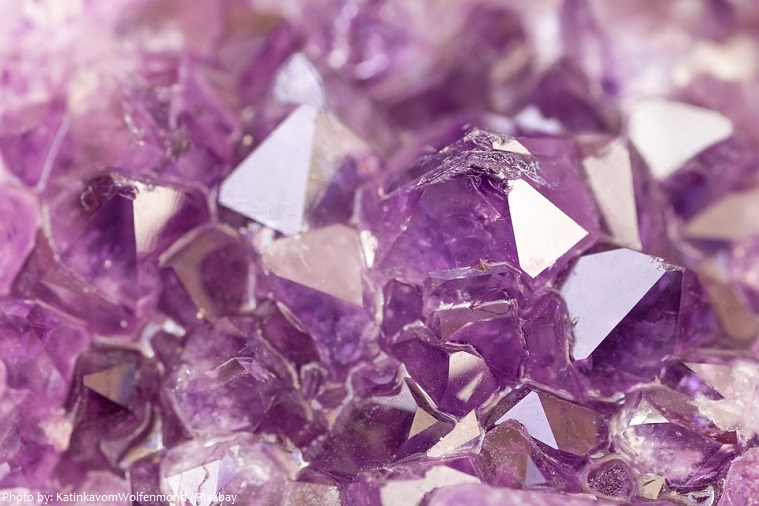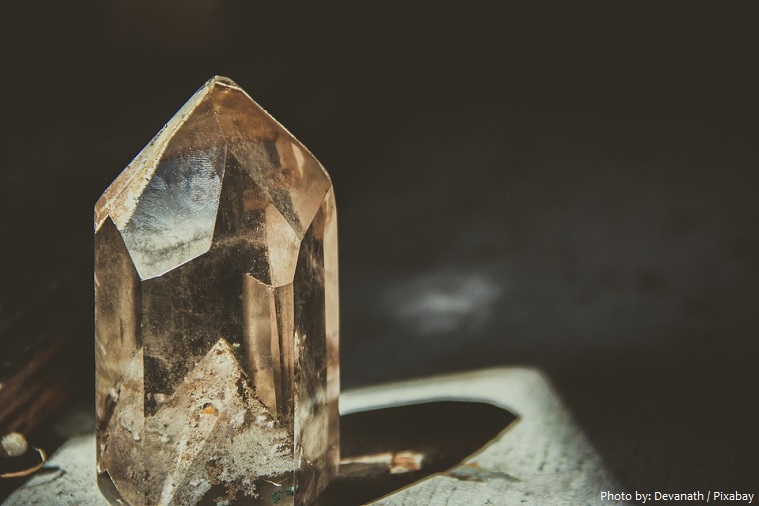Quartz is a widely distributed mineral.
It is composed of silicon and oxygen atoms.
Quartz is the 2nd most abundant and widely distributed mineral found at Earth‘s surface, behind feldspar.
It is present and plentiful in all parts of the world; and found is all forms of rock: igneous, metamorphic and sedimentary.
Quartz can be found in many shapes, sizes and colors.
There are many different varieties of quartz, several of which are semi-precious gemstones.
Pure quartz, traditionally called rock crystal or clear quartz, is colorless and transparent or translucent, and has often been used for hardstone carvings, such as the Lothair Crystal. Common colored varieties include citrine, rose quartz, amethyst, smoky quartz, milky quartz, and others.
Since antiquity, varieties of quartz have been the most commonly used minerals in the making of jewelry and hardstone carvings, especially in Eurasia.
Quartz’s hardness is rated as 7 on the Mohs scale of 1 to 10 (where 10 is the maximum value, assigned to diamond).
The word “quartz” is derived from the German word “Quarz”, which had the same form in the first half of the 14th century in Middle High German in East Central German and which came from the Polish dialect term kwardy, which corresponds to the Czech term tvrdý (“hard”).
The Ancient Greeks referred to quartz as κρύσταλλος (krustallos) derived from the Ancient Greek κρύος (kruos) meaning “icy cold“, because some philosophers apparently believed the mineral to be a form of supercooled ice. Today, the term rock crystal is sometimes used as an alternative name for the purest form of quartz.
Roman naturalist Pliny the Elder believed quartz to be water ice, permanently frozen after great lengths of time. He supported this idea by saying that quartz is found near glaciers in the Alps, but not on volcanic mountains, and that large quartz crystals were fashioned into spheres to cool the hands. This idea persisted until at least the 17th century. He also knew of the ability of quartz to split light into a spectrum.
Ancient Roman, Egyptian, and Greek civilizations used quartz crystals as potent talismans. The Romans used rose quartz as a seal to signify ownership, and Egyptians believed the stone could prevent aging.
Quartz is the most common material identified as the mystical substance maban in Australian Aboriginal mythology.
The world’s largest deposits of amethysts can be found in Brazil, Mexico, Uruguay, Russia, France, Namibia and Morocco.
Quartz is a common constituent of granite, sandstone, limestone, and many other igneous, sedimentary, and metamorphic rocks.
Large amounts of quartz sand are used in the manufacture of glass and ceramics and for foundry molds in metal casting.
The largest quartz sphere has a diameter of 157.16 cm (5 ft 1.8 in), and is owned by Minas Brazil Stones (USA). The record was verified by expert witnesses in Dallas Texas, USA, on 9 March 2018. The sphere weighs approximately 5,450 kg (12,000 lb) and was shaped from a quartz specimen mined in Bahia, Brazil.
The world´s largest crystal skull is made of quartz. It is aptly dubbed Colossus but also known as Akator or Papa, is a modern-day example created by celebrated Brazilian crystal skull carver Leandro from a single block of Brazilian smoky quartz, and weighs 158 kg (348 lb) – roughly the same weight as a Sumo wrestler!





